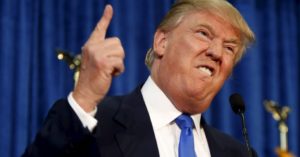
The vital importance of visual art, in this emerging plutocracy, is without doubt. Even though, for most politically engaged artists, it can seem like swimming against the popular tide.
But the cultural reversals of 2016 are, in fact, just a reaction against the false promise of aesthetics. They are anti-art, anti-intellectual, anti-fashion, and opposed to all forms of sophistication.
What went wrong? We enjoyed eight years of the most presentable US President in history. And no matter how little you liked Cameron and/or Blair, their smooth brands offered a certain surety.
Well, I don’t believe that BrexTrump had much to do with political realities. Nothing does, when you live in a corporate owned mediascape. It was rather a rejection of a certain bad look.
Please don’t ascribe authenticity to these populist politicians. Their deceptions are numerous and notorious. They have done away with political craft, the actual honesty of rhetoric and oratory.
In short, they have killed statesmanship or statespersonship. They have killed the gravity which art, via countless portraits and busts, has so often ascribed to the powerful: to popes, kings, gentry.
Who can maintain gravity, as the world spins faster and faster? Who can pretend to pre-eminence when already several billion are a click away? What matters if the context for any action is chaos?
It would be ridiculous to think that art could restore politics, on either side of the Atlantic, to former glories. Since the glorious few have led us to this, it would be neither possible nor desirable.
But the shallow figures who dominate world politics now have ushered in real 21st century fascists. Wherever they were all hiding, there is certainly a role for art in the fight against this.
They may have their baseball hats and their double breasted blazers, but underneath the trappings of normality, Trump, Farage, and their ilk are naked. They do not yet have their Leni Riefenstahl.
So in a world where perception is everything (and hasn’t it always been everything?) visual art is the most potent creative endeavour in which we can engage. Artists can dress power up, or down.
And when you throw in ceremonial drama (performance), when you throw in a few flags (pop), and some party political ads (video) you realise that in fact there can be no power without art.
This must be why an event such as the Turner Prize will always fuel tabloid ire. The political relations bodied forth by a quiet Helen Marten installation are surely antipathetic to shitty gold elevators.
In short, contemporary art has never had a clearer challenge. It is time to accede to the visual realm, to make it new, to make it more powerful than the guys writing the cheques for it.
Because seriously, plutocrats will always be the like the uninteresting patrons who paid to appear on their knees in renaissance altarpieces. Let art ensure history pities our new leaders, rather than fears them.
Really like the closing line “Let art ensure history pities our new leaders, rather than fears them.” Thanks for sharing
Thank you Gustavo!